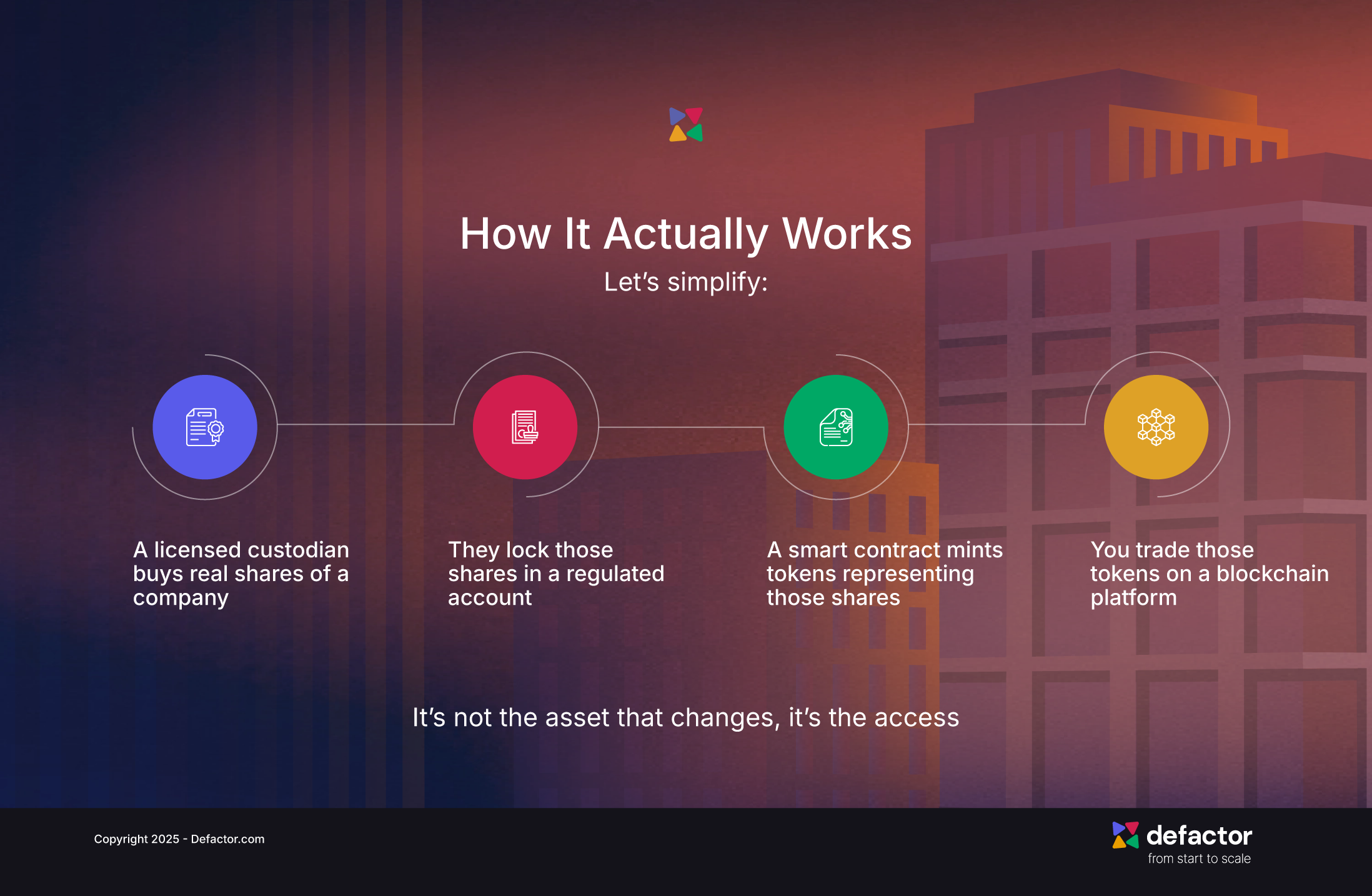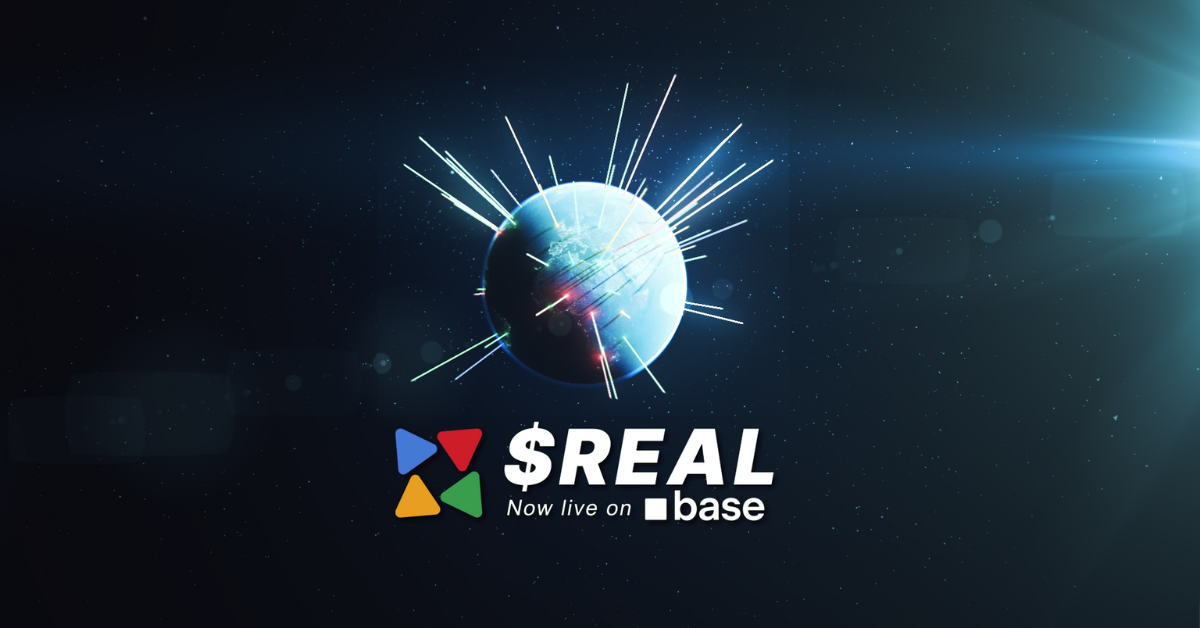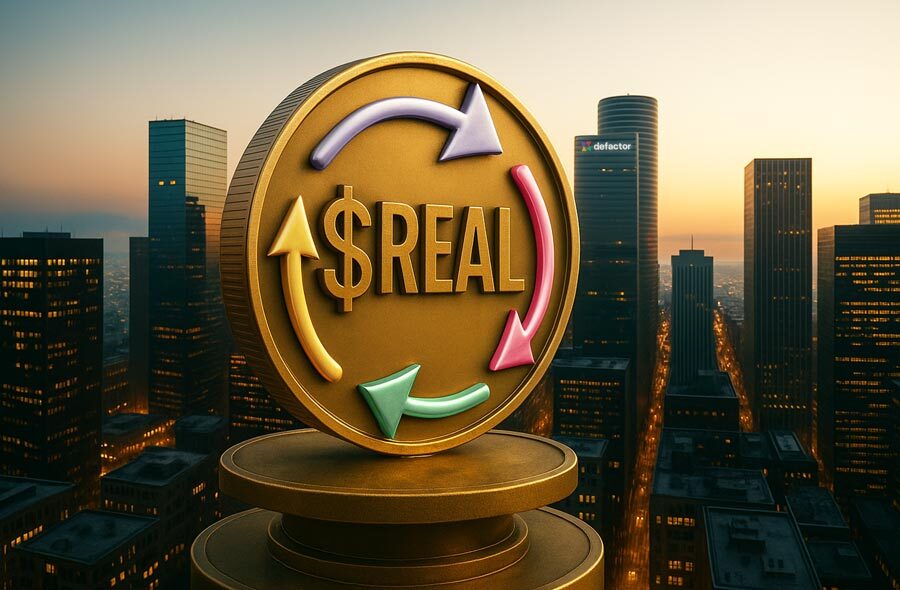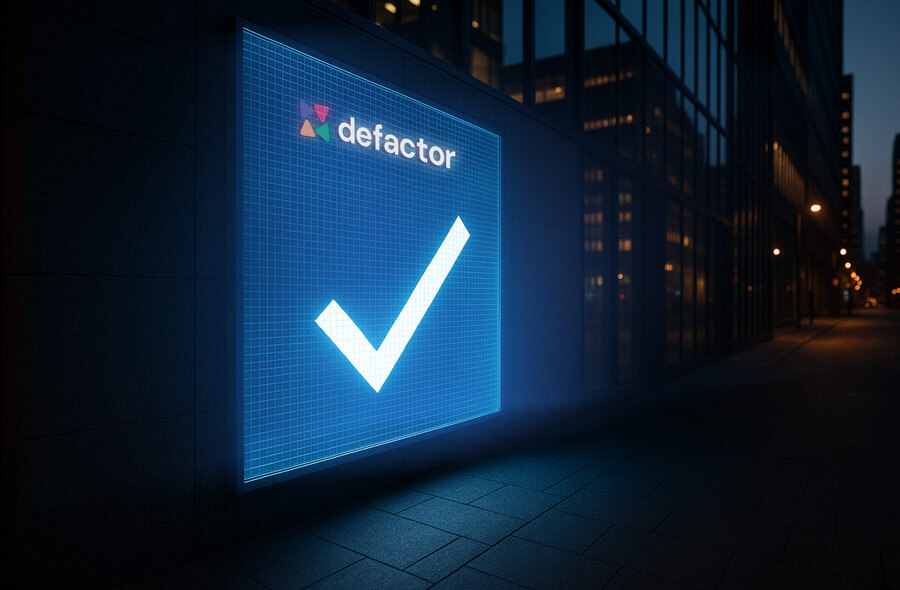“But Isn’t This Risky?”
Of course it is, but so is buying any equity.
One of the biggest criticisms leveled at tokenized assets is that they’re “not real.” However, when you purchase Tesla ($bTSLA) on Robinhood or Revolut, no one gives you a paper certificate or invites you to the boardroom. You’re not holding a piece of machinery or given keys to the factory floor. What you’re actually buying is a digital record, a line of text in a broker’s centralized database, that says, in theory, you have a claim to future profits. It’s already abstract and is already removed from the physical. Tokenization doesn’t introduce that abstraction; it makes it visible, transferable, and interoperable across systems. It takes a closed-loop financial system and gives it open-source rails.
However, that raises new questions:
- Who holds the real-world collateral?
- What happens in a regulatory dispute?
- Can tokens really represent ownership in a compliant way?
Equities face similar questions just wrapped in more familiar packaging. Is your broker actually holding the shares? Or are they using an account, held by a custodian, wrapped in a legal agreement?
The point is: none of this is truly "real" in the physical sense. It’s structured trust. Tokenization doesn’t eliminate that, it just makes it auditable, programmable, and in most cases, faster and cheaper.
So the question isn't really "Are tokenized equities legit?"
The better question is: Are they better?
And for a growing number of investors, developers, and institutions, the answer is starting to look like yes.

Why This Isn’t Just a Crypto Trend
Tokenized equities will not replace traditional financial products or markets; they're designed to enhance the infrastructure that underpins them.
RWA tokenization offers practical advantages for a range of participants:
- Cross-border investors access equities without geographic friction
- DeFi protocols integrating assets into decentralized systems
- Institutional stakeholders handling transparent, compliant assets
Far from being a final destination, tokenized equities represent part of a broader shift toward more open, efficient, and interoperable financial markets.
Defactor Role
While much focus tokenizing individual asset classes, Defactor provides the toolkit that powers the entire process for any asset. From onboarding to compliant issuance, liquidity provisioning, and lifecycle management. Our modular toolkit allows enterprises and developers to tokenize real estate, land, or bonds with built-in compliance, multichain support, and automated governance.
In a recent collaboration, Swiss-based investment company LynxCap used the Defactor toolkit to tokenize real estate-backed bonds, bridging institutional-grade credit into on-chain markets.
Through this integration:
- The bonds are now fully represented on-chain using smart contract infrastructure
- Defactor’s toolkit powers the underlying compliance, reporting, and lifecycle management of the assets
- The structure supports KYC/AML requirements and investor eligibility controls, making the issuance compliant by design
The growing adoption of tokenization by trad-fi players is a testament and direct result of the critical role that infrastructure providers have played in development. Defactor has been involved in tokenization for many years, quietly building the rails to enable financial instruments to transition into programmable, transparent on-chain assets.
What It Means for Equity Investors
If you’re managing portfolios or analyzing balance sheets, you’re already fluent in the value equities provide for businesses. Tokenization just provides a more efficient method to interact with them.
Tokenized equities build on a familiar foundation but enhance it with new capabilities:
- Fractional access without platform-imposed limits
- Integration with DeFi, enabling new forms of utility
- 24/7 liquidity, eliminating the constraints of traditional market hours
In effect, much as it has done for many other assets, tokenization is about removing long-standing inefficiencies and enabling a more open, accessible, and programmable financial system.
Key Takeaways
- Tokenized equities bring traditional stocks on-chain with 24/7 access and programmable features
- Institutions are embracing tokenization to represent bonds, credit, and other real-world assets
- Tokenization enhances equities by making ownership more transparent and interoperable
- Defactor enables compliant, multichain tokenization, powering the next wave of on-chain finance






